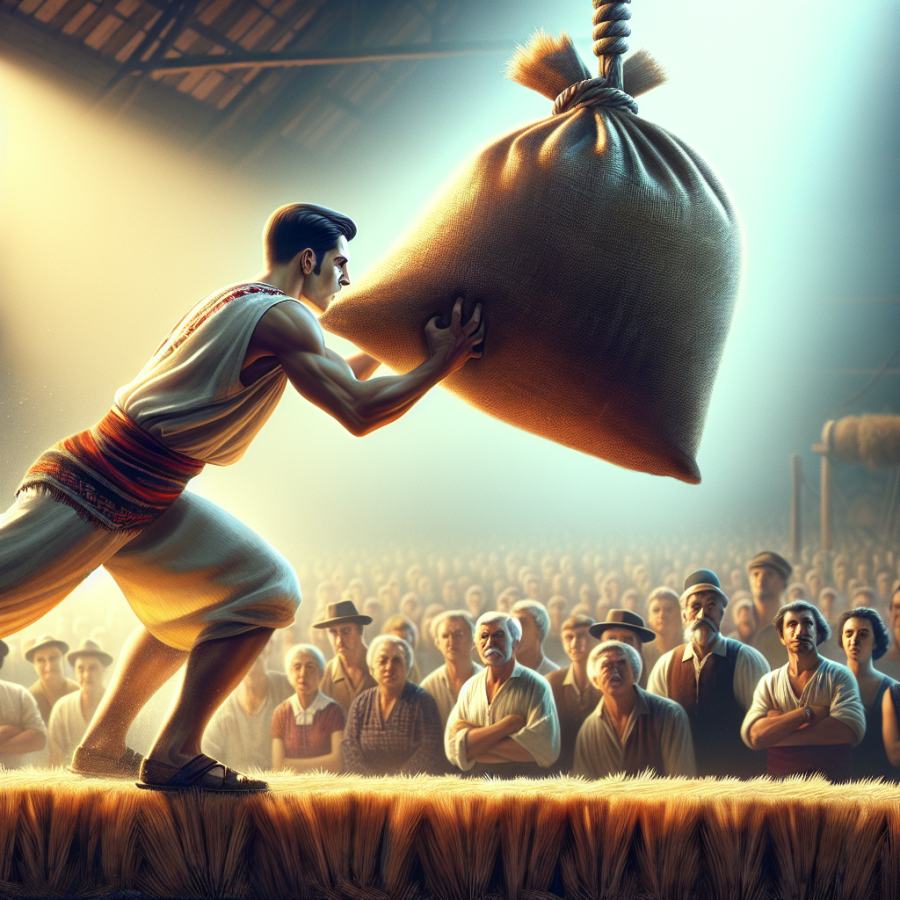As one of the most iconic events at Highland Games around the world, the Sheaf Toss has long been a crowd favorite, embodying the spirit of Scottish tradition. This event not only tests the competitors' strength but also their technique and skill. Here's an in-depth look at the components of the Sheaf Toss and what makes it such a formidable challenge.
**The History and Origin of the Sheaf Toss**
The Sheaf Toss can be traced back to agricultural practices in Scotland where farmers would toss bundles of grain to the second level of a barn or storage area. This functional act eventually evolved into a competitive sport, becoming a staple at the Highland Games. Its historical significance has made it revered and its practice maintained throughout centuries.
**Equipment and Preparation**
The sheaf toss requires a burlap bag filled with straw or a similar substitute, typically weighing 16 to 20 pounds for men and 10 to 12 pounds for women. This sheaf is pitched using a three-tined pitchfork. Prior to the competition, athletes must ensure the sheaf is packed tightly and the fork's tines are straight and firm to prevent any disadvantage.
**Techniques and Styles**
The technique in the Sheaf Toss is crucial. Athletes must adeptly balance power, speed, and finesse. The traditional style involves a quick approach with the fork before using a combination of lower body strength and a snapping motion of the wrists to propel the sheaf upwards. Some athletes may prefer to swing the sheaf between their legs before releasing it, while others might opt for a more straightforward overhead technique.
**The Competitive Challenge**
The objective is to toss the sheaf over a horizontal bar, which is raised after each round. Success in the Sheaf Toss demands a well-honed technique, explosive strength, and precise timing. Competitors are given three attempts at each height, and failure to clear the bar in these attempts results in elimination. As the competition progresses, the bar is raised, pushing athletes to their limits and testing their endurance along with their skill.
**Training and Fitness**
To excel at the Sheaf Toss, athletes typically engage in a rigorous training routine that includes strength conditioning, plyometrics, and technique drills. Core and leg strength are essential, as is developing a powerful upper body. Flexibility and agility also play a role, particularly in mastering the fluid motions required to launch the sheaf effectively.
Read also:
Taking the Plunge: Exploring the Thrills of Cliff Diving
Mastering the Techniques and Training for The Ultimate Sheaf Toss Challenge
To truly excel in the Sheaf Toss, one of the most visually impressive events at any Highland Games, a competitor must possess not only brute strength but also impeccable technique and honed skills developed through rigorous training. This section delves into the intricacies that athletes focus on to master the art of the sheaf toss and overcome this ultimate challenge.
The core of the sheaf toss, as with many traditional Scottish heavy athletic events, lies in its historical roots. Originally, the toss was a practical means for farmers to test their ability to pitch sheaves of wheat over high barriers. Modern competitors throw a burlap bag stuffed with straw, weighing anywhere from 16 to 20 pounds for men and 10 to 12 pounds for women, over a horizontal bar using a pitchfork.
Technically, the event combines aspects of strength, timing, and technique. First and foremost, it requires significant lower body power to generate the necessary force to propel the sheaf upward. Athletes cultivate this power through a regimen of squats, deadlifts, and plyometric exercises that build explosive strength.
In addition to raw power, agility and flexibility are also critical. Athletes often incorporate mobility routines, stretching, and dynamic movements into their training to improve their range of motion, allowing them to create the whip-like motion needed to launch the sheaf effectively.
The grip on the pitchfork is another key focus area. Competitors practice finding the perfect balance point on the fork to ensure a secure grip and optimal control when swinging and releasing the sheaf. This often involves repetitive drills to develop muscle memory for the right grip and release timing.
Furthermore, the swing itself is an intricate dance requiring balance and coordination. Athletes must swing the pitchfork and sheaf back between their legs, then up and forward in one fluid motion. Seasoned competitors often work with coaches to fine-tune this swing, analyzing their form with video playback and making incremental adjustments to find the most efficient and powerful trajectory.
Specific drills that emulate the swinging motion of the sheaf toss are a staple in the training regimes of these athletes. Kettlebell swings, medicine ball throws, and variations of Olympic weightlifting movements are incorporated to simulate the sweep of the pitchfork and the transfer of energy from the athlete's body through to the sheaf.
Mental preparation rounds out an athlete's comprehensive training approach. The ability to maintain concentration amidst the noise of a festival atmosphere is vital.
Exploring the Origins and Rules of Sheaf Tossing
Sheaf tossing is a traditional Scottish agricultural sport that has been a staple of Highland Games and Celtic celebrations for centuries. This test of strength and skill involves competitors throwing a sheaf—typically a burlap bag filled with straw—over a horizontal bar using a pitchfork. The origins of sheaf tossing are deeply rooted in farming practices and communal gatherings where showcasing physical prowess was a form of entertainment and competition.
The history of sheaf tossing can be traced back to the agricultural customs in Scotland. Farmers would often compete against each other by tossing bales of hay into lofts for storage. This task, while practical, required considerable strength and precision, making it an ideal competition. These friendly contests evolved into organized events as part of the Highland Games, a series of athletic and cultural celebrations that highlight Scottish heritage.
The rules of sheaf tossing are relatively straightforward but require a combination of technique and physical ability. Competitors use a pitchfork to hurl a 16 to 20-pound sheaf vertically over a raised bar. After each round, the bar is raised, with the winner being the individual who successfully tosses the sheaf over the highest bar without knocking it down. If a competitor fails to clear the bar in three attempts, they are eliminated from the competition. The sheaf must pass completely over the bar without making it fall, and the bar is typically raised in increments of six inches to progressively challenge the contestants.
The pitchfork used in sheaf tossing has its own set of specifications. It's traditionally a three-pronged fork, and while the overall design has remained consistent over the years, modern materials such as reinforced metals and composites have been introduced for better performance and durability. The mastery of the pitchfork is key to success in the event, as the angle and force of the toss can greatly influence the sheaf's trajectory.
In addition to physical strength, sheaf tossing requires adept technique. Participants need to balance power with finesse to ensure the sheaf clears the bar without causing an imbalance that might result in it falling back onto their side. They begin with a run-up to gain momentum, swing the sheaf in an upward arc while ensuring their grip and footing are secure, and release it at the optimal moment. Proper form is crucial to prevent injuries and to achieve the highest throws.
The sheaf itself also plays an important role in the competition. The weight and the way the straw is packed can influence the aerodynamics of the toss.




